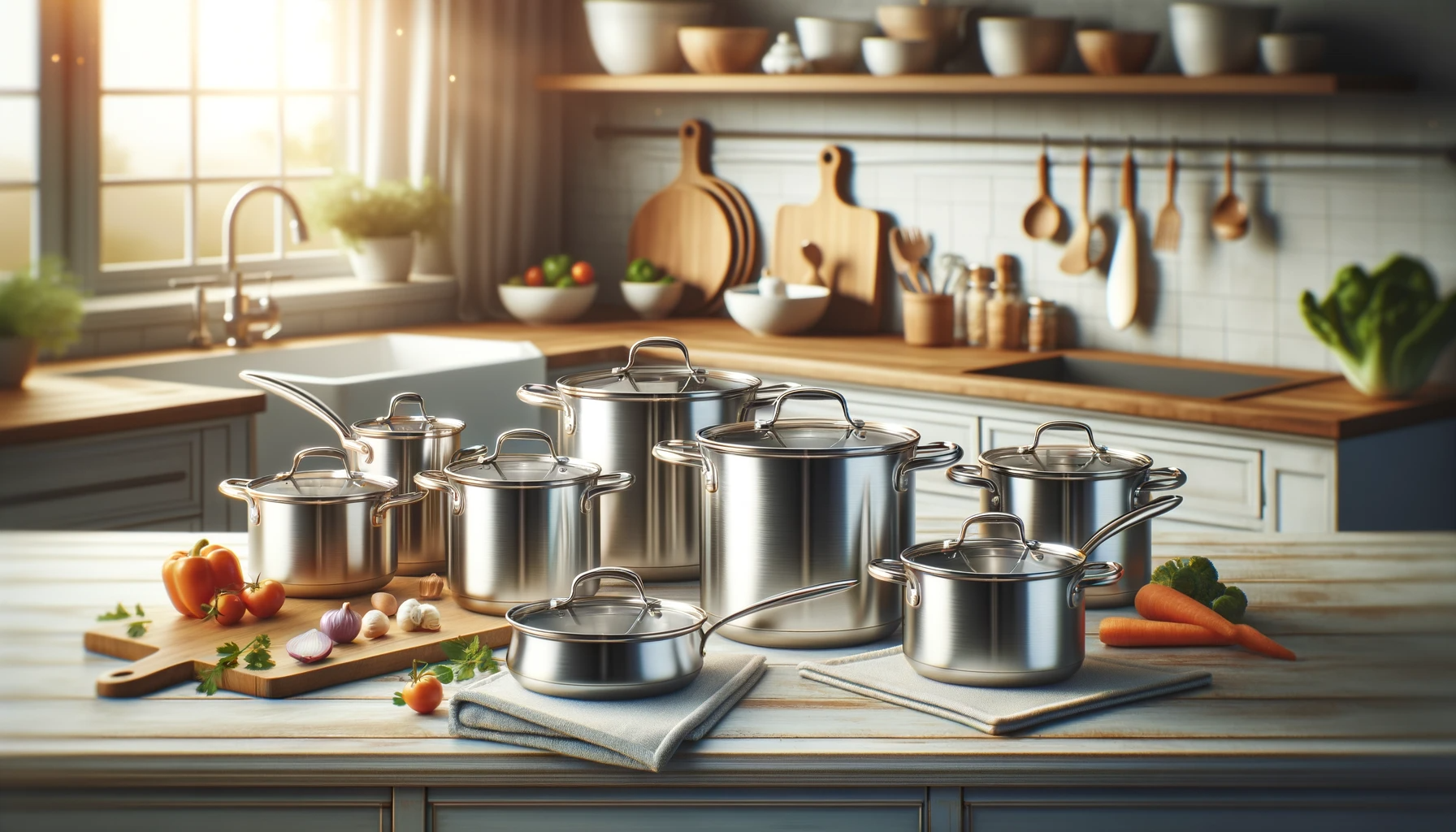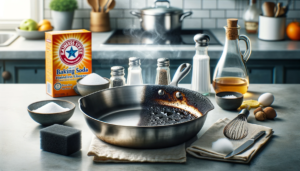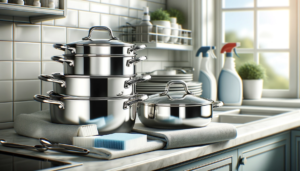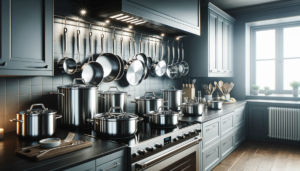With all the choices for pots and pans lining store aisles, how can you know which are truly safe for preparing your baby’s food?
Stainless steel is often considered one of the safest cookware options, but even within this category debates linger regarding its potential to leach metals over time, especially nickel.
Let’s examine what qualities to look for in stainless steel to cook baby food safely, as well as best practices for maximizing its integrity.
Is Stainless Steel Cookware Safe to Cook Baby Food In?
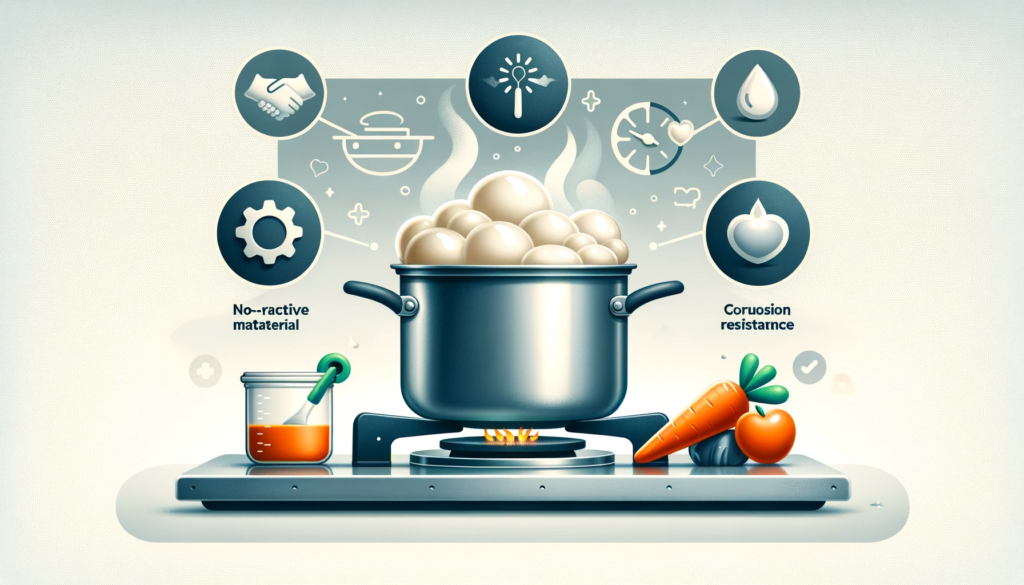
Yes, stainless steel cookware is considered safe for cooking homemade baby food, provided you choose high enough grades of stainless steel and care for the cookware properly to prevent leaching of metals.
The best choices are 18/10 or higher grade stainless steel pots and pans, which resistance corrosion, scratching and deterioration better than cheaper options.
With extra care taken to clean thoroughly and avoid cooking highly acidic foods, quality stainless steel can provide babies and toddlers healthy, nonreactive vessels for steaming, simmering and baking a wide variety of early foods.
As we’ll explore more below, not all stainless steel is created equal when it comes to safety and integrity over time with repeated usage.
So let’s take a deeper look at how to select and care for the best stainless steel pans to keep your baby’s food pure and safe at every meal.
What is Stainless Steel Cookware?
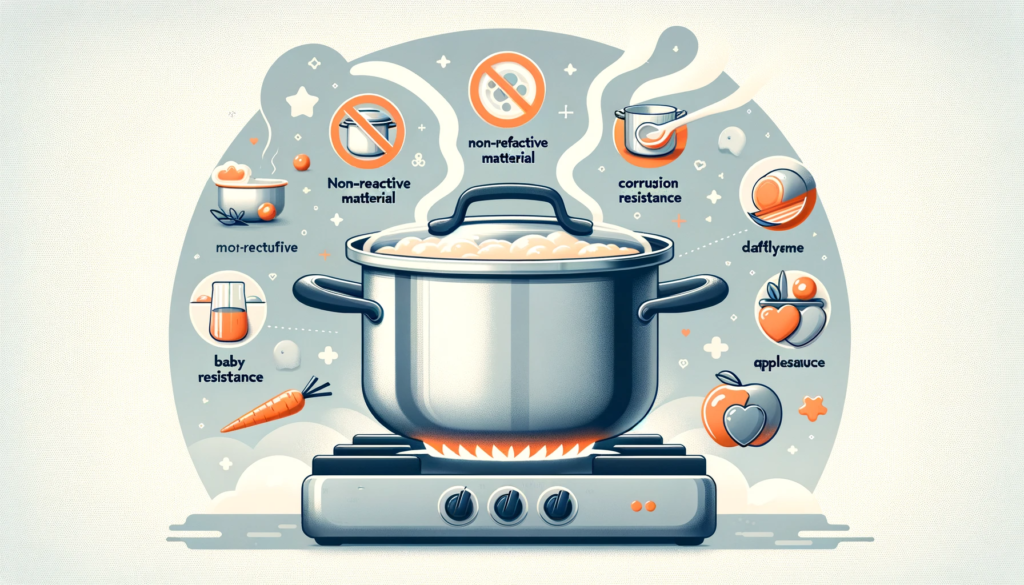
Stainless steel cookware refers to pots, pans, and other cooking vessels that are made out of steel containing chromium.
The addition of chromium creates an invisible protective layer of chromium oxide on the surface of the steel, which makes it resistant to rusting and staining.
Stainless steel is a very popular cookware material because it is durable, non-reactive, easy to clean, and withstands high temperatures.
There are different grades of stainless steel used in cookware that contain varying amounts of chromium and nickel.
The most common designations are 18/8 and 18/10.
The first number refers to the percentage of chromium that is present, while the second number is the percentage of nickel.
An 18/8 stainless steel contains 18 percent chromium and 8 percent nickel, whereas an 18/10 stainless steel contains 18 percent chromium and 10 percent nickel.
The higher nickel content of 18/10 stainless steel makes it more resistant to corrosion and oxidation at high temperatures.
Overall, stainless steel is valued in cookware because it provides a durable, nonreactive surface for cooking that retains heat well and resists warping.
It does not leach chemicals into food like some coatings or materials may when overheated or damaged.
These properties also lend themselves nicely to cooking baby food.
Is Stainless Steel Safe for Cooking in General?
Stainless steel is widely considered a very safe cookware material because it is nonreactive, stable at high temperatures, and does not release any chemicals or compounds into food during the cooking process.
Unlike some metal cookware, stainless steel does not react with acidic ingredients like tomatoes or vinegar.
It also does not have any surface coatings that could potentially scratch off or leach dangerous compounds at very high heat the way nonstick cookware may do.
Good quality stainless steel cookware is durable, scratch-resistant, and impermeable.
It does not allow metals or other molecules to migrate from the cooking surface into the food.
Lower quality stainless steel may have less corrosion resistance due to lower percentages of nickel and chromium or due to poorer manufacturing quality.
But quality stainless steel, preferably 18/10 grade or higher, does not have any safety concerns associated with cooking or leaching heavy metals.
As with any cookware, stainless steel should not be extremely overheated to high temperatures for long periods of time.
But with proper cooking techniques for the temperature needs of the particular food, stainless steel is an extremely safe choice.
It has a high level of inertness that lends itself nicely to cooking even for those with chemical sensitivities.
Specific Concerns with Cooking Baby Food
Cooking for babies and infants requires extra care and precaution when it comes to food safety and avoiding contamination for a few important reasons.
First, babies have much lower body weight than adults, meaning potential toxins have a higher relative concentration.
Babies’ cells and organs are still rapidly developing, so their systems can be impacted profoundly by heavy metal absorption.
And finally, babies have no control over what they ingest, so it is up to caregivers to assess all cooking materials, ingredients and safety precautions.
For these reasons, extra care should be taken when selecting cookware that will come into contact with any food a baby will consume.
Materials that could leach trace amounts of heavy metals like lead, arsenic, cadmium or aluminum should absolutely be avoided, even if those quantities would be considered negligible for adult consumption levels.
Any cooking vessel used for a baby’s food should be inert and stable even under higher temperature, with no coatings that could scratch off into food over time.
Glass, ceramic and stainless steel tend to rate highest in safety for baby food preparation.
And specific types and quality levels within those categories can make one option safer than another.
Importance of Avoiding Leaching of Heavy Metals Like Nickel Into Food
One potential concern that comes up specifically with stainless steel is the leaching of nickel into acidic foods cooked at high heat for long periods.
Traces of metals like nickel can be toxic the sensitive systems and organs of infants if consumed regularly.
However, quality 18/10 or higher grade stainless steel is engineered to prevent nickel leaching so that cookware made out of it is safe for baby food preparation.
Lower nickel content means lower likelihood of leaching.
And the protective chromium oxide layer forms a barrier between food and the stainless steel that prevents migration of molecules like nickel.
Heating stainless steel cookware to extremely high levels for a long time can degrade this protective layer over time and increase odds of nickel leaching with acidic foods.
But normal cooking temperatures and times will not compromise a good quality stainless steel’s ability to keep nickel safely in the cookware and out of baby’s food.
Tips for Safely Using Stainless Steel for Baby Food
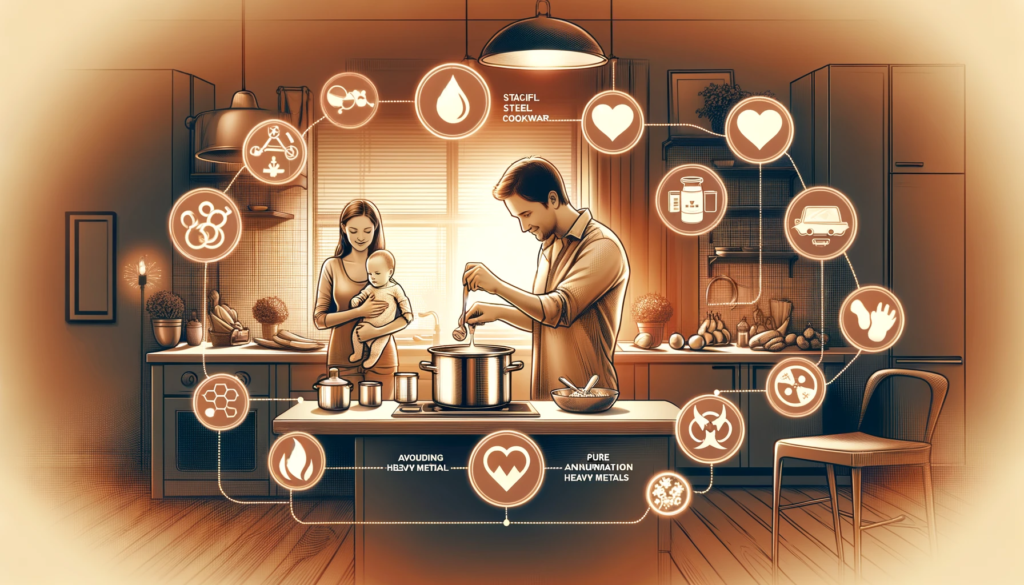
While quality 18/10 stainless steel cookware is considered highly safe for preparing baby food, there are still a few best practices caregivers should follow to maximize safety and minimize any risks when cooking.
Choose High-Grade Stainless Like 18/10
Opting for 18/10 grade stainless steel ensures lower nickel content and better protective qualities than cheaper 18/8 steel or lower grades.
The higher percentage chromium oxide layer resists deterioration better with heat and abrasion over time.
And the reduced nickel also lowers any chances of leaching.
An infant’s developing body is so sensitive to toxins that paying more for cookware that will last longer and leach less is a wise investment in the long run.
Ensure Pans In Good Condition, Free of Damage/Wear
It is important to inspect stainless steel pans thoroughly and replace any that show signs of damage, warping, abrasions in the cooking surface or corrosion around the edges or rivets.
Any visible wear and tear like scratches or pits mean the protective layer has been compromised and exposed underlying metals could leach into food.
Avoid using older, damaged hand-me-down pans.
Purchase high quality new stainless specifically to prepare wholesome, pure foods for baby.
Wash Thoroughly Before First Uses and After Cooking Other Foods
Be sure to wash new stainless steel pans in hot, soapy water before their first uses to remove any residues from manufacturing and transport.
Rinse thoroughly with clean water as well.
Avoid abrasive scrubbers and instead use non-scratch sponges or soft cloths.
It’s also wise practice to wash pans thoroughly after preparing any non-baby foods, even if just boiling water for pasta.
Any starch, acidic compounds or oil residues could contaminate baby’s next meal.
Using pans exclusively for baby simplifies the washing routine.
Don’t Cook Extremely Acidic Foods for Babies
Since highly acidic ingredients like tomatoes or vinegar are more likely to help leach metals into food over time, it is wise to avoid preparing those in stainless for babies.
Even quality stainless steel has more protective abilities against neutral pH foods.
So steam fruits or vegetables rather than actively cooking tomato sauces or dressings in stainless pans.
Use Moderate, Even Heat When Cooking
The highest potential for stainless steel leaching any metals would come from an overheated, damaged pan cooking very acidic ingredients for long periods.
Avoid those conditions by maintaining moderate temperatures with even heat distribution when preparing baby foods.
It may take a few extra minutes, but be patient and stir regularly for best results.
With attention to choosing high quality materials and good cooking techniques, stainless steel can be an excellent nonreactive surface for steaming, simmering or baking nutritious homemade meals for babies and toddlers.
Take extra care when preparing an infant’s food and stainless steel will serve babies safely for many early meals.
Conclusion
In conclusion, quality 18/10 grade stainless steel cookware is considered safe for cooking baby food as long as proper care and precautions are taken to prevent heavy metal leaching.
Choosing high-quality cookware, monitoring for damage, washing thoroughly, avoiding high acidity, and using moderate heat can all help caregivers safely prepare homemade baby foods to fuel infants’ rapid growth and development.
